Voices of Small Schools Podcast: Sustainability
Key Points
-
Establishing a solid financial plan is crucial for microschool sustainability, ensuring that expenses do not exceed revenues.
-
Leadership sustainability is vital; having a succession plan and codification model helps ensure the school’s longevity beyond its founders.
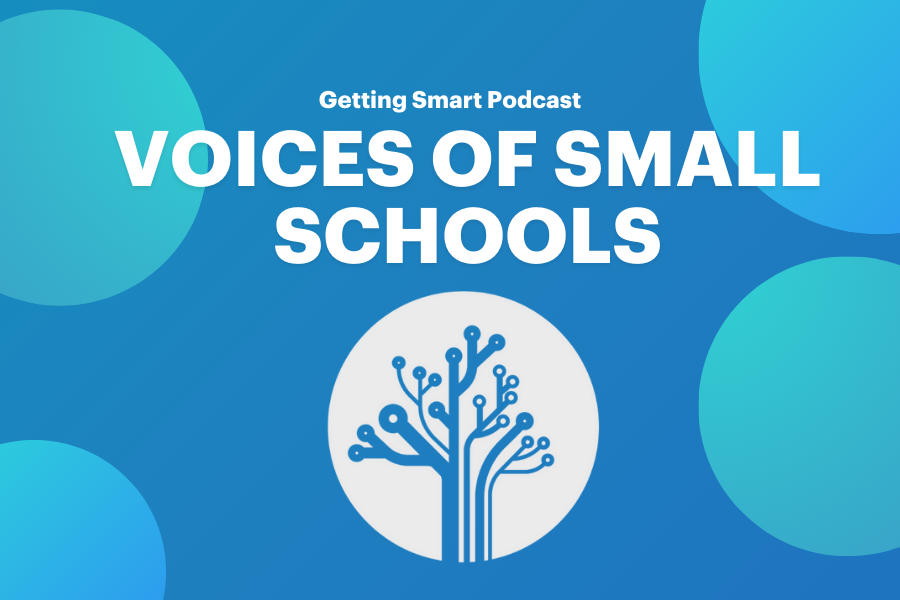
In this episode of the Getting Smart Podcast, hosts Jordan Luster and Victoria Andrews address the critical aspects of sustainability within the microschool movement. They are joined by insightful leaders like Amar Kumar and Andrew Lee, who share their expertise on maintaining financial health, ensuring leadership succession, and prioritizing equity in education. Through candid discussions, the episode highlights how microschools, with their innovative and decentralized models, navigate challenges like budgeting, tuition setting, and creating inclusive environments. It’s a conversation not only about numbers but about sustaining passion and impact in education. Tune in to explore how these small-scale schools are making significant strides in shaping the future of learning.
Outline
- (00:00) Introduction to the Getting Smart Podcast
- (02:55) Insights from School Leaders
- (09:42) Challenges and Future of Micro Schools
- (15:38) Teacher Compensation and ESA’s
Introduction to the Getting Smart Podcast
Jordan Luster: You are listening to the Getting Smart Podcast. I’m Jordan Luster, and today I am joined by my illustrious colleague, Victoria Andrews.
Victoria Andrews: Hey, guys.
Jordan Luster: Over the last few years, we’ve explored how microschools can truly drive macro change, offering new options for families, addressing underserved populations, and serving as a catalyst for innovative practice. Last fall, our Learning Innovation Fund partnered with the Walton Family Foundation, and we launched The Big Push for Small Schools grant program. The mission was to foster a network of microschool leaders and provide grants to advance innovation and catalyze the innovation happening within these learning spaces.
We really focused on operators who were scaling high-quality models, especially those serving historically marginalized communities. Through this work, we’ve uncovered a few key themes that are shaping the microschool landscape. We’ve already touched on scalability and accessibility, but today we’re going to focus on sustainability. At Getting Smart, we’ve concentrated our support on high-quality, innovative models. While we recognize that these small schools can address inequalities, they can also create them, which is why we prioritize equity in every aspect of our efforts—from facilitating communities of practice to providing coaching, technical assistance, and funding. Through that work, we’ve gained insight into how microschools are sustaining themselves. Sustainability at microschools isn’t just about longevity; it’s about preserving effectiveness and impact. I’m excited to dive into that today with Victoria. We’ve interviewed several school leaders across the nation and touched on sustainability, digging into what they consider sustainable practice—how they intend to sustain their model, and what sustainability truly means in the microschool lens. I’m really excited to hear from Amar Kumar. I got a chance to talk to him at the National Hybrid Schools Conference last year, and he gave some interesting insights around sustainability. Let’s take a listen.
Insights from School Leaders
Amar Kumar: You have to start by looking at microschools as a business entity, whether you’re a for-profit or nonprofit, it is still a business. This means you have to think about revenues and expenses and making sure one is greater than the other. When we think about revenues, we break it down into our capacity, average tuition, and enrollment numbers. We’re very clinical about making sure we have enough students to make a site sustainable. From the expense side, we’re cautious about only committing to things we are confident we can deliver so that our expenses don’t exceed our revenues. This sometimes makes things hard because you can’t invest in the things you wish you could if you don’t have the financials. But it ensures that all our sites will continue to run for the long run. We have three strategies. First, we set tuition at a point where we are essentially making ends meet, not overspending on things, and not renting locations that are too expensive because all of those things impact affordability for families. Second is scholarships. We have a buffer in every tuition to offer scholarships, allowing us to lower tuition for some students by capturing higher tuition from others. This helps us in a cross-subsidy model. Third, most of our microschools are in states with some form of public funding, either an ESA program, a scholarship tax credit, or a voucher. We do what we can to be eligible for those programs so families who may be at the lower end of the income pyramid can still afford it.
Free your mind. We are all captives of an old way of doing things—parents, students, teachers, policymakers, funders—and we must free our minds to new ways. The way we do things today doesn’t have to be the way we do them tomorrow. I am inspired by people starting microschools, and our company’s mission is to ensure every child loves the school they’re in. So if your aspiration is to build a school that children love, come talk to us. We’d love to help and support you in that mission. In education, there’s an effect where the bigger you get, quality can suffer because you don’t have direct sight into what’s happening. The way Hippo works is we delegate a lot of decision-making to the lead learning coach at each site, and we monitor three groups of metrics. The first is financial sustainability, ensuring the site can live for a long time. Second is academic outcomes; we measure many things to ensure kids are learning to read, write, and meet standards their parents expect. Third is experience or retention; we survey parents, students, and learning coaches to ensure everyone is thrilled. For example, we use a metric called the Net Promoter Score at our pods, which you may be familiar with. It’s a high bar. Most schools’ net promoter score is like negative 20. Last year, our net promoter score was 63, which is incredibly high, like Nike and Apple levels. This year, our net promoter score is 74. So we’re growing, and families love what we’re doing. That creates a wonderful, virtuous cycle in each community. Sometimes we see a site doesn’t have the right physical layout, which then means families aren’t as excited, or a learning coach may not be delivering the high bar of experience we expect, so we may evaluate the learning coach there. We’ve had to close some sites once or twice, and it’s always difficult. Parents are upset, but we support those families to find an alternative. In one site we’re closing this year, the parents banded together to create their own alternative, and we’re supporting them by helping find a new space, staff, and create a new program.
Victoria Andrews: What I appreciated about what Amar mentioned was, first of all, just looking at the tuition point for many microschool leaders, especially ones we’ve coached and worked with. Their background may be in education, or they may come from a district or a charter network, so even thinking about tuition makes them feel uncomfortable because that’s not their focus. In order for them to be sustainable, they have to look at tuition, overhead costs, operating costs, staffing costs—all those key pieces. If they don’t, sustainability is not an option. Many we’ve talked with, Jordan, are concerned about starting tuition too low or not accounting for all costs like bookkeeping and marketing. Those are factors in sustainability. I’m glad he mentioned that. For those unfamiliar with Kaipod, they provide a base level of services for those who join their Catalyst program or network, which may interest some microschool founders because they receive support. Others with a different entrepreneurial spirit may want more personalization.
Jordan Luster: The fact that this model is more decentralized allows for personalization in how funds are utilized to best serve each student individually. It’s not top-down, like a franchise might control finances or the operational budget, but truly allowing decision-making for site-level leaders. That’s a factor in the decentralized microschool model that allows for financial sustainability. They’re able to make decisions to best meet student needs. That’s something we see at microschools—small and nimble environments—as beneficial in looking at sustainability.
Challenges and Future of Micro Schools
Victoria Andrews: A topic under sustainability that concerns me and many founders we work with is the sustainability of the leader. This is the dream or the birth child of many microschool leaders with an entrepreneurial mindset wanting to meet community needs, be responsive, and create something agile, whether for five or 25 years. The sustainability of the leader is critical, and for many models, brilliance lies within that leader. What are some concerns or conditions that ensure sustainability of the leader for longevity?
Jordan Luster: Honestly, the first thing that comes to mind is succession planning. Ensuring there is governance or an advisory board managing the leader and the succession plan. Proper implementation of the succession plan is essential because a plan on paper isn’t enough if something happens to a leader. There’s always that terrible analogy of if they’re hit by a bus tomorrow, what are we doing? What are we left with?
Victoria Andrews: It’s like Tyson said, “Everyone has a plan until they get punched in the face.” You can have the plan on paper, but once you get punched, what are you going to do?
Jordan Luster: Right. With many microschools, this is a fear not just of leaders but of funders. They’re driven by passion-filled leaders wearing many hats, and there’s fear of burnout, almost inevitable. I think of leaders like Coy Moorefield at The Lab School of Memphis, who created a pipeline for teachers, training them into leadership roles. She’s creating a plan to step back and allow the school to run independently. Professional learning opportunities and leadership pathways for existing teachers, succession planning, and governance or an advisory board—these are key factors contributing to the sustainability of both the leader and the school. When you leave, what is the plan?
Victoria Andrews: When you were talking, it made me think of measures for codification so it doesn’t all lie with the leader. Do they know who to contact for payroll, marketing, etc.? Many leaders use tools like Tran and Google to compile and move information to another storage space. You mentioned governance and a succession plan, but having a codification model built out provides a stronger sustainability pathway.
Andrew Lee is the school leader at the Vita School of Innovation in Phoenix, Arizona. He’s an infectious leader in the best way possible—high energy, very knowledgeable, a former school teacher. His school targets high school students, getting them re-engaged in a flexible way. I had a chance to chat with him at Vecon, and I can’t wait for everyone to hear what he has to say.
Andrew Lee: So, how do we do this? First, we eliminate unnecessary expenses often found in normal school budgets, like administrators, which are a huge part of the budget. I’ve humbly taken a respectable teacher salary to make this work. Our teachers are paid more than average, but I’m not the one causing the issue. I’m making a personal sacrifice to ensure it’s equitable for families and teachers. That’s what it’s about. I was a teacher, and I get it. We’re doing the hard work, and these are the people who deserve fair compensation. It comes from intentional budget planning. We didn’t need an ESA to operate because we have Ed Key as a partner program. We receive about $7,000 a year per pupil, which is dramatically low compared to other states. Even with that, you can make it work, and I think it’s possible.
Jordan Luster: This ties back to the sustainability of the leader. He mentioned two key things: ESAs and sustainability of the leader. He took a huge pay cut to sustain his budget financially, encouraging teachers to consider the same. Although no one is in education for the money, school leaders and teachers deserve a livable wage. Many teachers wanted to stay in the classroom, but it wasn’t sustainable financially for their families. It brings us back to how we can thoughtfully consider this in the funding matrix or portfolio of a microschool, and how can we reshape the narrative that this is a sacrifice for the greater good.
Teacher Compensation and ESA’s
Victoria Andrews: It’s contradictory in that we want the best but don’t want to pay the best. I do appreciate Andrew’s “cut the fat” approach. We both know there’s a lot of fat in education. By doing that, they increased teacher pay, making it more sustainable. This ties into different funding mechanisms and streams. Initial costs to open a microschool are high, and scaling requires more cash. Look at what percentage comes from philanthropy, grants, ESAs, or private tuition. Diversifying income ensures sustainability. Some leaders are innovative, partnering with local districts, capitalizing on offerings or unused space, or serving homeschool families wanting social interaction. They’re creating options, providing a community service, and creating revenue streams for sustainability.
Jordan Luster: The bottom line is it starts with a solid financial plan. Passion alone won’t keep doors open, and it’ll burn you out faster than fueling you. I like that he highlighted the cost per pupil is lower than traditional schools. Microschools work with microbudgets, focusing on what matters—the students and learning—and providing effective, quality options for all kids. ESAs play a huge part, and there’s talk about whether they’re truly sustainable. Can this model change at any election period?
Victoria Andrews: This conversation isn’t ending here; it’s evolving as the microschool landscape and ecosystem evolve. Focusing on financial stewardship, operational adaptability, and leveraging partnerships are keys to microschool sustainability.
Jordan Luster: I’m grateful we heard from amazing leaders like Amar and Andrew. I want us to continue this conversation because it’s ongoing.
Victoria Andrews: I’ve enjoyed our conversation and hope we’ve left listeners intrigued. If you’d like more information about microschools and organizations we’ve supported through the Walton Family Foundation, join us at GettingSmart.com.
Jordan Luster: Thank you, Victoria.
Victoria Andrews: Thank you, Jordan.
Guest Bio
Amar Kumar
Amar Kumar is the founder of KaiPod Learning, an organization that helps teachers start their own microschools. In the past few years, KaiPod Learning has become the fastest growing microschool network in the country supporting dozens of teachers in bringing their education dreams to reality. In his past experience, Amar was a school teacher, a principal, and the head of product for one of the largest online schools in the country.
Andrew Lee
Andrew Lee is the founder of Vita High School (formerly Vita Schools of Innovation), a forward-thinking educational institution in Phoenix, Arizona, that blends Montessori principles with real-world skill development, including financial literacy, entrepreneurship, and mental wellness. A former aerospace engineer turned educator through Teach For America, Lee was inspired to revolutionize education after seeing firsthand the disconnect between traditional academics and the skills students need to thrive. Under his leadership, Vita High School has grown rapidly since its launch in 2022, empowering students through personalized learning, dual-enrollment opportunities, and student-led ventures, all with the mission of building 1 million learner-driven schools.
Links

Jordan Luster



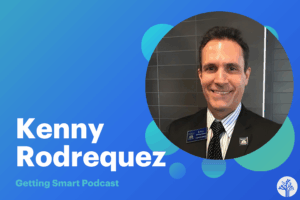
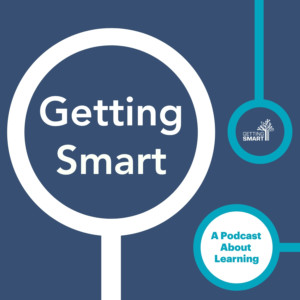

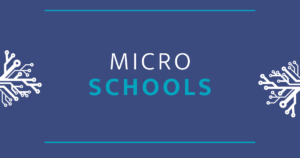
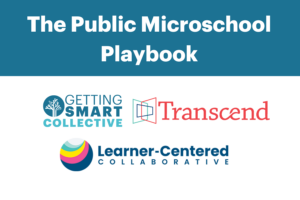

0 Comments
Leave a Comment
Your email address will not be published. All fields are required.